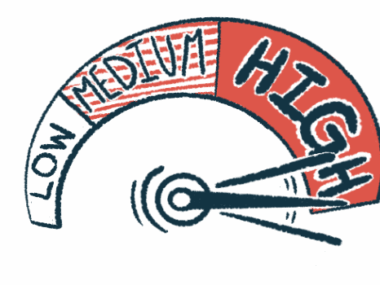Hyperspectral Imaging May Help Assess Severity of Raynaud’s in SSc
HSI technology seen as novel way to quantify disease activity
Written by |

Hyperspectral imaging (HSI) — technology used in medicine to obtain a three-dimensional dataset — may be a feasible, non-invasive technique to quantify the severity of Raynaud’s phenomenon associated with systemic sclerosis (SSc-RP), according to a new study.
This “technology may present a novel, fast, and effective method to quantify and monitor disease activity in SSc-RP,” the researchers wrote.
HSI technology also may provide needed outcome measures for clinical trials of potential treatments for the condition.
“There is an unmet medical need to enhance the SSc-RP clinical trial design to enable valid testing of therapy,” the team wrote.
The study, “Hyperspectral imaging in systemic sclerosis-associated Raynaud phenomenon,” was published in the journal Arthritis Research & Therapy.
HSI technology may provide new non-invasive tool in SSc-RP
Most people with SSc, or scleroderma, develop secondary RP, which means Raynaud’s phenonenon related to an underlying disorder. RP causes the fingers and toes to feel numb, prickly, and cold in response to cold temperatures or stress. In the case of scleroderma, RP is caused by the excess collagen that narrows small blood vessels.
Although Raynaud’s is a common complication of SSc, the lack of robust quantitative outcome measures is a barrier to developing treatments.
HSI can measure oxygenated and deoxygenated hemoglobin concentrations, as well as oxygen saturation in the skin. Hemoglobin is a protein that carries oxygen in red blood cells to the body tissues. Oxygen saturation is a measure of the amount of oxygen circulating in your blood
Studies showed that HSI was able to detect changes in the skin blood circulation in people with diabetes mellitus foot disease and peripheral artery disease.
Now, researchers at the Yale School of Medicine, in Connecticut, sought to test the potential role of HSI in quantifying disease severity and activity in patients with SSc-RP.
Their study enrolled 13 participants with SSc-RP, recruited from the Yale Scleroderma Program outpatient clinics, and 12 healthy controls — with a majority of women (92.3%). The mean age among patients was 49.3, and mean disease duration was 10.9 years. Among the patients, 69% had limited cutaneous SSc.
All patients self-reported RP symptoms and 61% were taking calcium channel blockers, a type of vasodilator — a medication that relaxes the walls of blood vessels, improving blood flow.
The participants performed HSI using a hand-held camera in regions of the fingertips and the palm of the hand. Both hands were assessed. A probe then generated oxygenation maps by calculating oxygenated and deoxygenated hemoglobin levels, as well as oxygen saturation.
Results showed that although the levels of oxygenated hemoglobin were similar between patients and controls, those of deoxygenated hemoglobin were significantly higher and oxygen saturation was significantly lower in the individuals with SSc-RP.
Our results suggest that HSI technology may be a feasible and quantitative approach to assess RP vascular dysfunction and may be a useful outcome in SSc-RP clinical care and trials.
The participants also underwent a cold challenge, in which all immersed their gloved hands in a water bath for one minute. The hands were imaged at 0 minutes, 10 minuts, and 20 minutes after the cold challenge.
Compared with controls, the SSc-RP patients had a threefold higher decline in oxygenated hemoglobin and oxygen saturation, from baseline (before the cold exposure) to immediately after the challenge.
Moreover, in patients, deoxygenated hemoglobin increased by 1.8 times when comparing baseline levels with those immediately after cold exposure.
Significant changes also were observed 20 minutes after the cold challenge. The SSc-RP participants experienced a greater increase in oxygenated hemoglobin and oxygen saturation, and a greater decline in deoxygenated hemoglobin, compared with controls. This indicates differences in rewarming after the cold challenge, the team noted.
“Our data suggest that HSI technology for the assessment of SSc-RP at baseline and in response to cold provocation is a potential quantitative measure for SSc-RP severity and activity,” the researchers wrote. However, they added, “longitudinal studies that assess sensitivity to change are needed.”
The values obtained with HSI were then correlated with patient-reported scores in the Cochin Hand Function Scale (CHFS) and the Raynaud’s Condition Score (RCS). The CHFS is a functional disability questionnaire about daily hand function-related activities, whereas the RCS reflects the severity of RP.
Patients who reported worse hand function according to the CHFS had significantly lower levels of oxygenated hemoglobin in the fingers immediately after the cold challenge. A similar correlation was observed with the RCS, although the result was not statistically significant in this case.
“We did not find a robust correlation between the CHFS and RCS [patient-reported outcome] measures and HSI parameters,” the investigators wrote.
According to the researchers, this was the first study to use HSI for finger and hand imaging in secondary Raynaud’s.
“Together, our results suggest that HSI technology may be a feasible and quantitative approach to assess RP vascular dysfunction and may be a useful outcome in SSc-RP clinical care and trials,” the team concluded.






